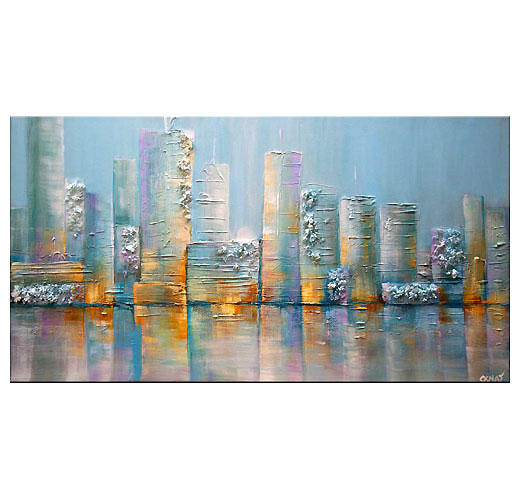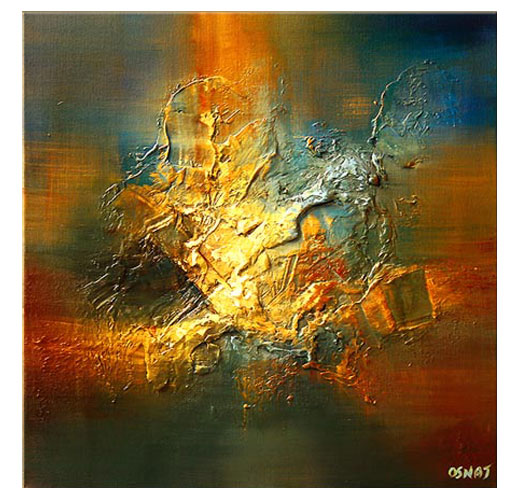How to Create Texture in Abstract Art
Art comes in different forms and shapes - among which are texture paintings. There is a great appeal to paintings that show more depth and texture than those that have a flat look. When we we think about texture, we naturally imagine layers of paint that is applied with a palette knife of some sort. However, this is not necessarily the case as texture can take many forms and shapes.
When you visit art supply stores you can find different mediums and accessories that can be added to your artwork and give it a richer look, texture and depth. For example, when I create texture I use gesso, towel papers, newspaper, Kraft paper, foil and mediums that contain tiny pieces of plastic beads, glass or sand (See my painting 'Salt City' for the glass/plastic texture or my painting 'Vanilla Sky' for paper towel texture). To create the desired texture I use glue, brushes, palette knife or paint scraper.
But art supply stores are not the only source to get your needed materials. You can find other items to add to your painting out in nature, or around your own home. Dried flowers or leaves, small pieces of tiny branches and other articles of your choice can add texture and beauty to your artwork. Anything special that will feel right and blend properly in your painting can give it a great 3D effect. Again, experimenting is the keyword here.
Personally, to make my artworks interesting I make random patterns with a palette knife and I use gold leaf, tree leaves, flowers, real sand, brunches and so on. The secret is to never limit your imagination.
After applying the texture you should let it dry for about 24 hours, especially if you applied heavy or thick texture. When the texture is fully dry you can start with the real celebration of applying paint onto it. Since the texture is rough (if you used beads, sand or any other raised sharp texture) you need to take a small damp sponge, dip it into the paint and "˜apply' it on the texture. I find sponges flexible to maneuver with and fill up any small "˜hole or crest' that the texture created, just by squeezing the sponge in.
When you are done creating your art and it is completely dry you can varnish it or just leave it as is.
All my products are by Liquitex and Golden.


